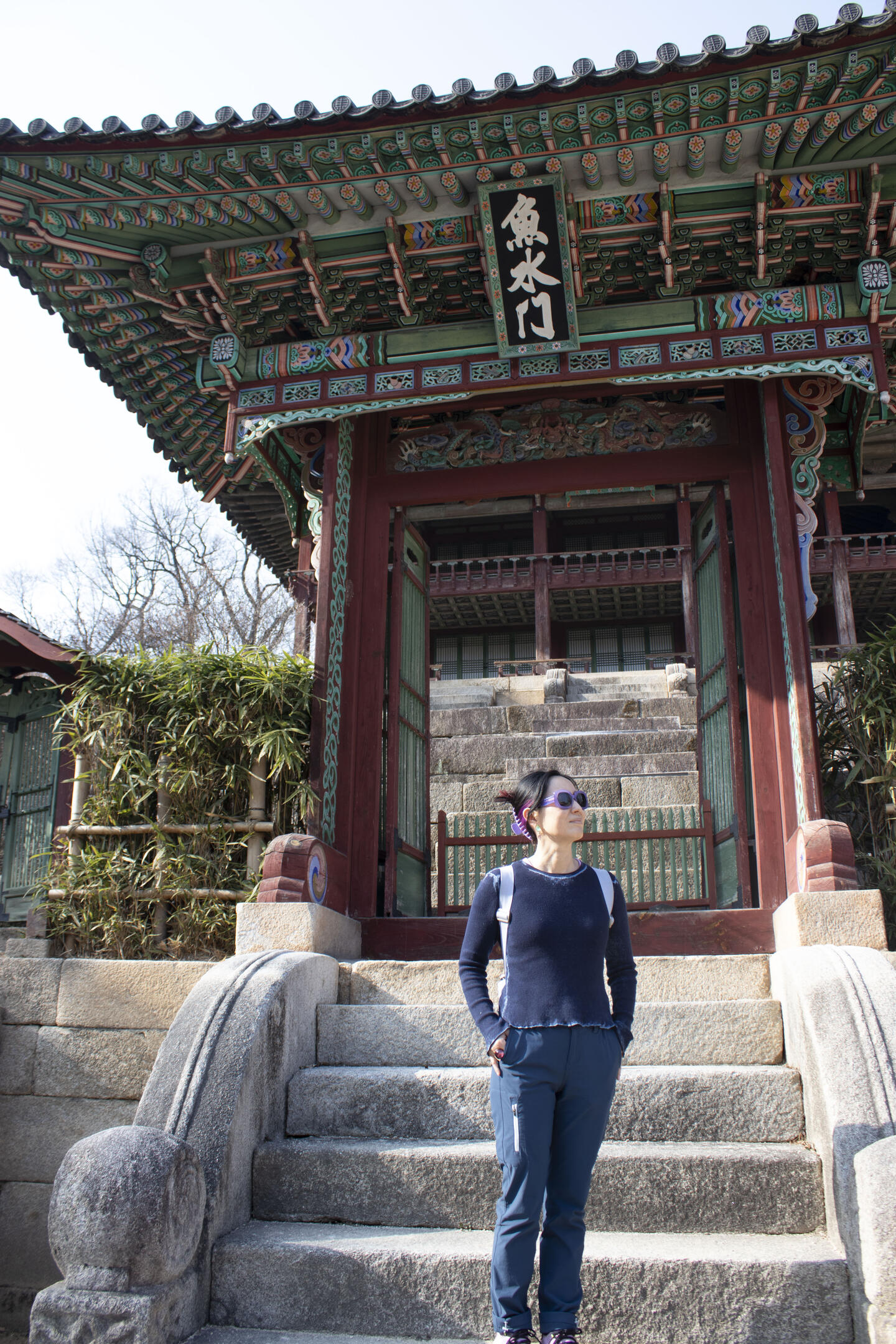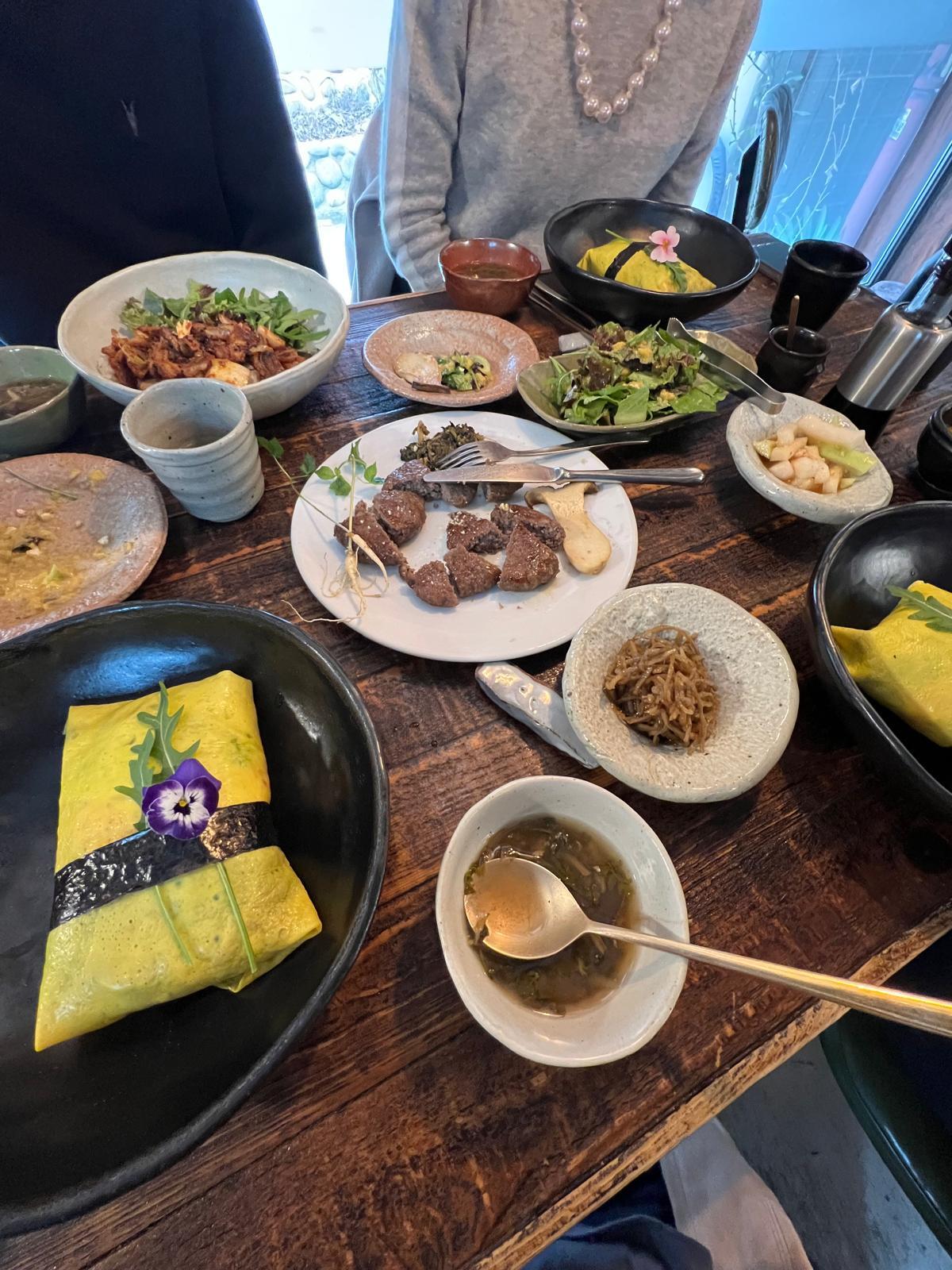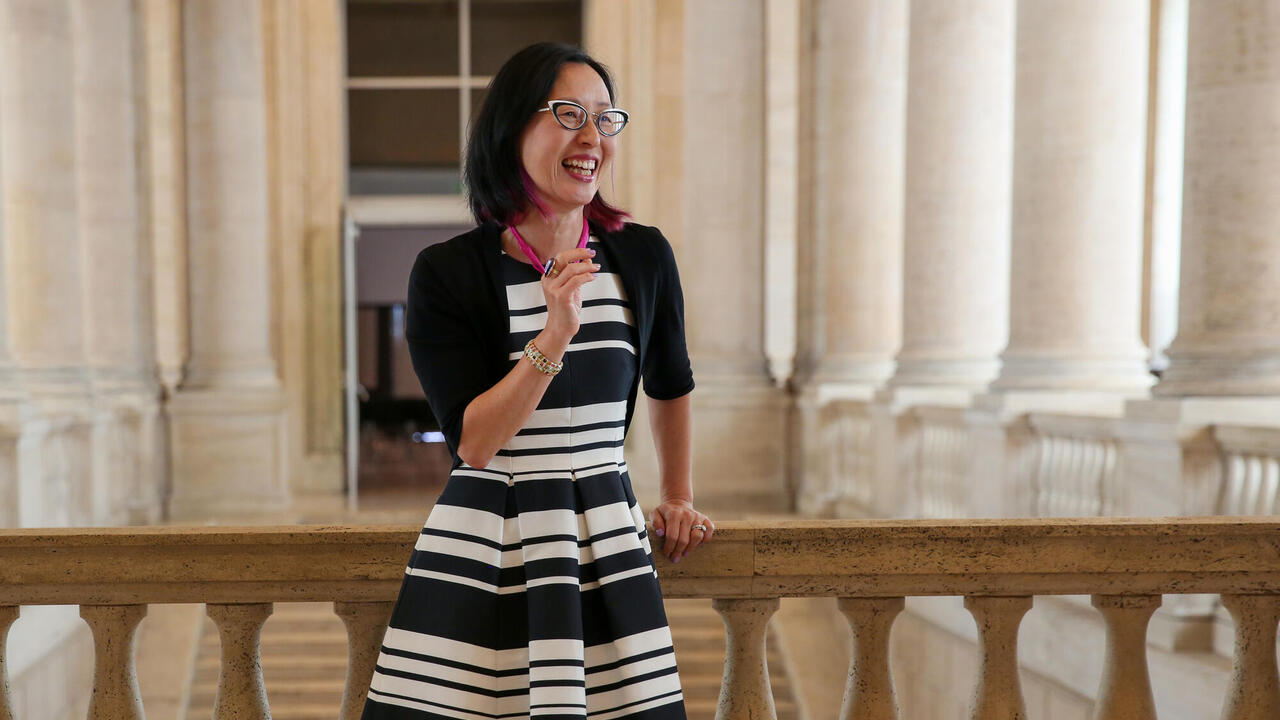Previously a seasoned New Yorker, Soyoung Lee started her curatorial career at the Metropolitan Museum of Art. She then moved to the Harvard Art Museums in 2018 as the chief curator, before finally reaching the West Coast, at San Francisco’s Asian Art Museum in April this year.
Lee talks about her roots in South Korea and witnessing the astounding and, at times, jarring transformation the country and its capital has gone through for the last two decades. In particular, she talks about how Seoul’s art world has managed to re-position itself from an ‘insular bastion of Korean traditions’ to ‘the global leader of cutting-edge art’. Coinciding with this rise is the support of leading figures from the Korean diaspora in the global art world – from curators to collectors to board members – creating a perfect storm for Seoul to establish itself as the preeminent art hub of Asia.
Monica Jae Yeon Moon What is your relationship to Seoul?
Soyoung Lee I was born in Jakarta, Indonesia, and spent the first five years of my life there. My dad was a diplomat for South Korea, so I’d go back and forth to South Korea. After our family landed in the US in my early teens, I spent one semester in Seoul during college as an exchange student, and again for my PhD. Over the last 20 years, I’d say I go to South Korea – and other parts of Asia – once or twice a year. And I’m still a South Korean citizen; I hold a Korean passport.
MM How has the landscape of Seoul changed in recent years?
SL The rapid change South Korea and Seoul have gone through is in some ways shocking. Over the last two decades the transformation – I think ‘breathtaking’ is the right word for it – has inspired wonder. Especially if people appreciate the recent modern history, where Korea came out of Japanese colonialism, the Korean war and the rapid development of the ’60s and ’70s, even the ’80s. It’s just unrecognizable.
What I’m really inspired by in Seoul is the youth. The adoption of history by youth culture feels really distinctive to Korea and Seoul in particular. When you’re in a cultural space, like the National Museum of Korea, you can see that in recent years it has been transformed. They’ve been really savvy about taking advantage of Korean pop culture and adapting it in their spaces, even in their collection. Their museum shop is all the rage. What was known as a bastion of tradition has been very nimble in responding to younger generations.
The adoption of history by the youth culture feels really distinctive to Korea and Seoul particular.
MM How does Seoul differ from other Asian cities, such as Hong Kong or Tokyo?
SL What’s really exciting, particularly for non-residents visiting Seoul, is that balance between the traditional and new.
There’s both the speed – literally – of the city’s traffic and people, and the speed of life. And yet there are spaces that allow for a slower pace of life and introspection. It’s a tension, but also a harmony between these extreme facets of a metropolis. Many cities, like Hong Kong or Tokyo, have versions of it, but I think in Seoul that tension is inviting, not overwhelming. Tokyo’s obviously still a global city, but the global embrace of Korean pop culture has completely transformed the city in reality and in perception. You could argue that the torch was passed to Seoul some time ago.

MM What about Seoul’s creative scene or art landscape? How has it changed and how do you see it evolving?
SL Seoul has risen as an international hub for contemporary art. Obviously it’s a centre for Korean contemporary art, but it’s becoming a hub for contemporary artists of the Asian diaspora and Japan, Southeast Asia and China.
Curators at our museum admire Seoul’s underground, including performance and sound art. And Seoul’s one of the most tech-savvy places in the world: that’s reflected in the art and culture scene as well.
With rapid modernization in the late 20th century, there was this fear that we were gonna lose the old Korea. People thought that the uniqueness of Korea was its traditions. So coming from this point, the creation of a contemporary art market is astounding. They’ve figured it out; not only have they figured it out, they’re showing the world where the future is.
MM Why has Seoul emerged as such a significant art hub in Asia?
SL Initially there were influential major collectors, like the Lee family of Leeum Museum. Amore Pacific is another example whose founder was incredibly keen, savvy and committed to art. More recently, there are Korean diaspora collectors of contemporary art around the world, particularly in New York, who’ve become major influencers and they’re going back to Seoul and participating in Frieze.
Also, the art and cultural world in Seoul has become much more global in its perspective and understanding of global art history. The success of Korean art and Seoul’s art scene came about because it opened up what it means to be Korean. The city has become more international in its own perception of itself, in its interaction with and in its presentation to the external world.
Seoul has become more international in its own perception of itself.
Finally, the Korean government’s investment in so-called soft power can’t be overstated. It’s a small country; it’s a small culture. There’s a community coalescing around what is good for Korea, and how we promote the image of Korea abroad, whether that’s traditional or pop culture, or contemporary art. That’s been really smart.
MM What are some of the exhibitions you’ve seen recently that made you feel this way?
SL I was impressed with the MMCA(National Museum of Modern and Contemporary Art, Korea)’s Annual Korea Artist Prize show earlier this year. While they’re promoting Korean contemporary art, their artists and themes have global resonance. Whether it’s issues of environment, materiality or identity, they’re consciously built around themes that have global resonance.
And Leeum is a great example: when they started their collection, they were known for keeping traditional Korean art alive, but they’re also this powerhouse in modern and contemporary art. Every year, they do these shows with major international artists. And because they’ve led that, many international and homegrown galleries are doing both Korean and international shows.
MM What (global, cultural, local) issues are you interested in these days?
SL What I’m interested in is how we explore the notions of identity beyond the current US-based discourse. I’d love for the Asian Art Museum to not only be a bridge between Asia and North America, but to lead the conversation around what it means to be Asian, Asian American and Asian diaspora, There are a number of Korean artists who open up the question of identity in really interesting ways.
MM Such as who?
SL One of my favorite contemporary artists is Lee Bul, who’s got a major retrospective at Leeum in September. She has always resisted categorization and labelling. She does not like to be known as a Korean artist because she’s an international artist. Even though her practice has been informed very much by her upbringing and life in Seoul and South Korea, she explores questions of feminism or female identity, and the tension between new technology – or the beyond-human – and what it means to be human.
There’s also Minouk Lim, who is based in Seoul, who just did a small show at the Ilmin Museum of Art. She’s very conceptual but she addresses questions of how we relate to and tackle changing environment, but also around questions of identity. Do Ho Suh, who is based in London, has constantly worked around the notion of home, informed by his Korean identity.
Many young artists are thinking about climate or environment. In a dense modern city like Seoul, that seems to be becoming even more of a relevant and urgent question for young people in general: how do we deal with these rapid changes in our environment, in a country that’s gone through so much rapid change within a short span of decades in the modern period?
MM Do you have people around you who visit Seoul for its art market ?
SL We have these powerhouse Korean American women on the board of the Asian Art Museum, as well as in the broader Asian diaspora. They probably would call themselves emerging collectors and their interests lie within the pan-Asian field. They’ve been to Frieze Seoul more times than I have. There are also curators from the Asian Art Museum and colleagues around museums in the US, like Hyunsoo Woo at the Philadelphia Museum, and Miyoung Lee at the Whitney Museum. She’s been an incredible supporter of Korean curators and artists.
The rise of these influential figures in the US elevate the awareness around Asian and Asian American culture and experiences. I think this is fantastic and impactful in motivating others to visit cities like Seoul.
MM Finally, what’s your favourite place to eat in Seoul?
SL The transformation of Insa-dong is a microcosm of Seoul. There are pockets of it where you could still encounter kind of authentic traditions, but it’s also become this cool hangout spot with tiny teahouses and various eateries to explore. One of the Korean restaurants I went to there is called A Flower Blossom on the Rice. I thought it was emblematic of the melding of tradition and super-cool, contemporary chic. And the food was tasty.

The other thing about Seoul that I love is department stores, which is something you don’t have in North America. Not the department stores for the shopping so much, but the food halls at the basement of the department stores where you can sample an assortment of dishes. I’m in heaven when I go to a Seoul department store.
Further Information
Frieze Seoul, COEX, 3 – 6 September 2025.
Discounted tickets are now sold out, limited full-price tickets available. Become a Frieze Member for premier access, multi-day entry, exclusive guided tours, and more.
BUY NOW
For all the latest news from Frieze, sign up to the newsletter at frieze.com, and follow @friezeofficial on Instagram and Frieze Official on Facebook.
Frieze Seoul is supported by Headline Partner LG OLED, in a collaboration that merges the worlds of art and technology, and Global Lead Partner Deutsche Bank, continuing over two decades of shared commitment to artistic excellence.
Main image: Morehshin Allahyari, She Who Sees The Unknown: The Queer Withdrawings, 2022-2023. Silver, mirror vinyl (site-specific installation). “Rave into the Future: Art in Motion”, Asian Art Museum. Photo by Gina Clyne. Courtesy: the artist, OXY Arts, and Asian Art Museum
